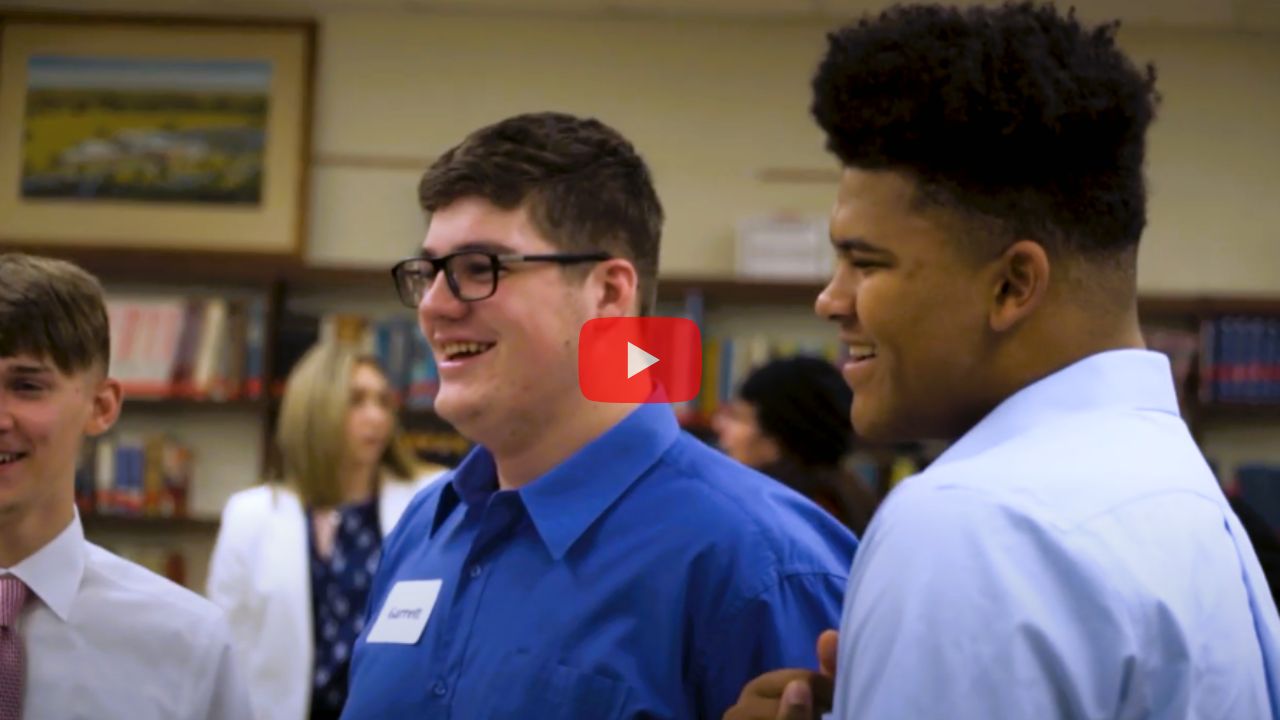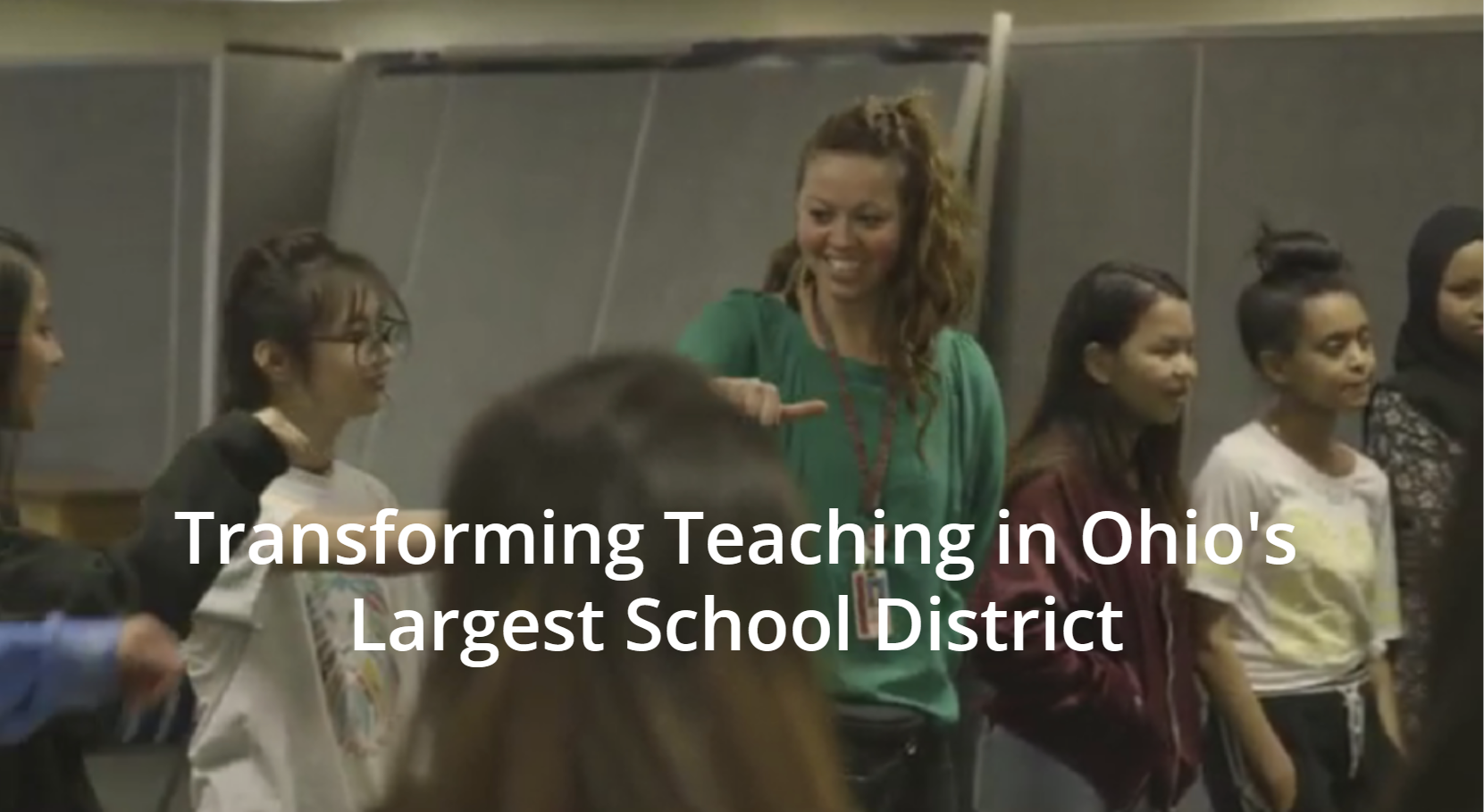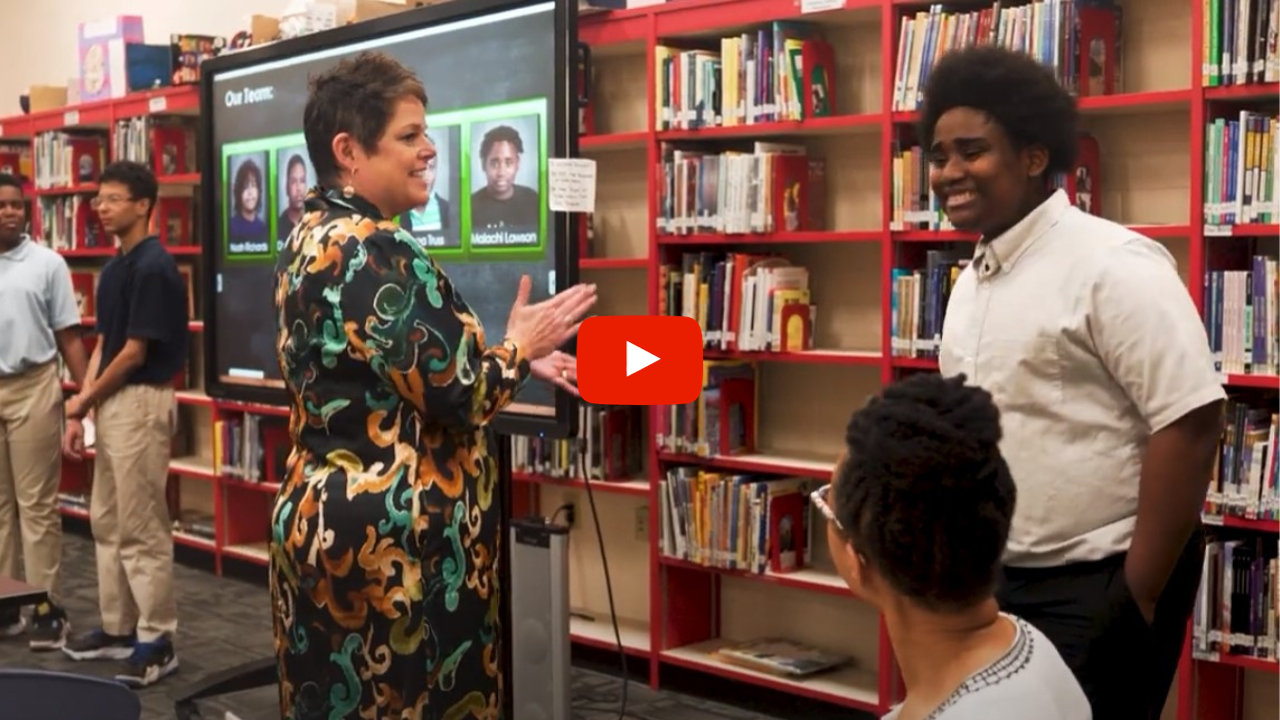In this episode, Alison and Tim reflect on the 2016 Hawken Educators Workshops in both Cleveland and California. They discuss how the needs of the attendees have changed as Entrepreneurship Education continues to expand and evolve.
Tim: So we are fresh off of two workshops here in… What was it now, July of 2016?
Alison: Yeah.
Tim: And the last two of five that we’ve done.
Alison: That’s right.
Tim: We were kind of sitting here reflecting on what we felt from it, what we heard from it, and thought I’d like to kind of get your thoughts on exactly that.
Alison: It’s interesting. I feel like I’m resurfacing after being deeply immersed in these workshops the past few weeks. I think, really my biggest takeaway at this point has been that we really are part of a global movement. That here we are in our school, and I feel like I’ve been in training the past year, so I’ve had my head down. I’ve been pretty amazed with the transformative growth that our students have gone through, and how powerful this is as a vehicle for education. But even beyond that then to recognize how many other educators out there around the world are interested and trying new things, and doing school better, and truly seeking out people who have had some success in programs they’ve developed?
That there’s this interest in collaborating and sharing, and building together. I mean, truly, we had people coming from China and Australia, Slovenia, Kazakhstan, a whole range of different countries who are in much different places economically, and even with their education systems and things that they’re facing. Yet, that there’s this demand for stepping into a globalized world that’s a lot more complex with the issues, and being able to prepare our students to go out there and be those global change makers, the people that know how to solve the problems. Or at least understand how to navigate the problems, and find some kind of meaningful solutions. I think it was pretty encouraging.
Tim: There was a lot of diversity within the attendee pool, that we weren’t really aware of, at least I wasn’t until I saw the people in the room. It was the geographic diversity that you mentioned, but it was also the differences in both programming and needs that people had. So you had administrators of private schools there to kind of see where this might fit in their school, and then you had sort of co-curricular after-school program managers looking to implement something in four weeks. You had middle school classroom teachers, public, private. It seemed like we had a lot of diversity in many different ways.
Alison: Even in subject matter, as well. The interesting piece here was we had a number of teachers who really wanted to test out how you can use real-world problems to solve challenges in their own class, whether it was a science class or a math class, or history, or English. There was a number of different lenses, or disciplines, that people were interested in using still. But by taking this new kind of approach that Doris has built out over 20 years of her career, I mean, this is her life’s work and to be able to share that with people who were eager for a how…
You know what I mean? Everybody in the room is pretty aware that education is broken, and they really were there to understand, “How can we try something new to address that?”
Tim: You had mentioned that you had some conversations with people that were sort of takeaways for you. Were there any specific ones that you kind of wanted to talk about?
Alison: Yeah. Actually, there was a person who mentioned that they were a science teacher and they had been interested in developing something in their course. They were thinking, “Well, maybe I’ll pilot a little something at the beginning just to see how it goes,” and came away saying, “This really was a moment where I recognized it’s okay to try things like this, and that they might not work out and it’s okay to fail. But if I’m able to at least pilot one unit up front in the beginning of my physics class, that it might create more engagement for my students. In fact, the entire year’s worth of physics might be more engaging because of the three-week unit we did up front to explain why this matters to the real world and having them solve a real-world problem using some physics to get there.”
So for me, hearing something like that coming away from these two-day workshops, I thought, “This is amazing. Here we are, trying to share what an entrepreneurial mindset can be for the next generating, and equipping our students in a way that they’ve got the mindset, they’ve got the skillset. But if we’re able to also share some of that with educators who are now a little bit more entrepreneurial in the way that they approach their work, or they’re willing to take a creative risk, they’re willing to try something new, they’re embracing failure, I think those are some entrepreneurial characteristics that I’m not sure are always present in the classroom.
Tim: An interesting thing about this idea of failure, which is a really common theme in entrepreneurship and entrepreneurial education, and there’s a heavy emphasis on failing often and failing fast, and failure is something that’s talked about a lot. I think what’s been lost in that approach is that failure occurs outside of that as well. So for example, as a traditional classroom teacher, you’re going to fail. It’s not like if you don’t do entrepreneurial education you won’t fail. You are still going to fail no matter what you do. It’s in a different way. So this idea of trying things, and failing and learning from them, but doing them in a way that is from a positive approach as opposed to a shameful one.
So I have numerous examples from my teaching career, where I was in the classroom doing exactly what I was supposed to in the traditional sense, and came up short. It was more of a shameful thing. It wasn’t a learning opportunity.
Alison: For you as a teacher.
Tim: For me as a teacher, it was like, “Okay. Hide that.”
Alison: Ah. “Don’t talk about it.”
Tim: “Don’t talk about it,” and then thinking like, “Well, maybe that’s happening to other teachers. It probably is, but I’m not going to talk about it.” So I think, it’s not an either/or for failure, when we talk about entrepreneurial education.
Alison: True.
Tim: You’re going to fail either way. It’s like, what are you going to do with it?
Alison: Yeah. No, that’s interesting to think about what’s going to resonate with students. I mean, it’s something I’ve had to learn over the years, certainly, where with Doris’ guidance day to day, and your support as well through that process, really thinking through, “Where are the students at in this moment, and how do we reach them?” and that we just have to try things. Sometimes things will stick and other times they don’t, and when they don’t we have to figure out then, “What are we going to do next in order for it to really resonate?” Because the work itself with students working on real problems, there’s that ultimate understanding of why this matters.
But their process getting there, even if they’re motivated to find a solution for a real CEO that’s coming back in three weeks that they need to present a solution for, day to day, there’s still a lot of messiness in that process that the students are trying to figure out and that we’re trying to guide them through. Absolutely, some things work and other things fall totally flat, and you thought, “Wow. That wasn’t so successful, but let’s try it again.” I appreciate, as a teacher this first year, that you and Doris have given me such space to fail.
I remember, I came in the door and you both said, “Listen. You’ve never really done this before inside of a school. We expect you’re going to fail. We expect that you’re going to screw this up. We’re here to help support you through that so that the class experience isn’t compromised for the students.” I’ve been incredibly grateful for that leadership, because it really felt like it’s been a mentorship kind of relationship. Like I’m an apprentice in some ways, where I can really learn day to day by doing this work, and then reflecting on it after the fact, through conversation with Doris, conversation with you. Or thinking through, “Why was that successful?” or, “Why didn’t that work today? What can we try tomorrow?” And continuing to have this proactive approach that is very creative.
Every day feels different, and I think I had a little bit of fear coming in the door that teaching meant standing in front of the room and having a lesson plan prepared. That that was going to feel stale. But this model, again, that Doris has created allows a lot more space for creativity and requires you to be much more invested in the moment to find where the students are and fill their needs. So that you kind of fill the gaps in whatever needs they have so that their learning can happen in a transformative way. That feels really dynamic and exciting from an entrepreneurial perspective, which is more my background.
Tim: Something I not only heard, but something I found myself emphasizing even more so in this workshop than previous ones was this idea of being completely honest and transparent with the students, and saying up front, “We’re going to try some things and they’re not all going to work. I don’t have all the answers, and I don’t know the perfect path.”
Alison: Yes.
Tim: I think it’s a very different way of learning than the system I was taught in, where I just assumed the teacher was the authority. The teacher showed no weakness. In fact, as students, we tried to find that weakness and exploit it, like that was part of the game.
Alison: How interesting.
Tim: I think, sort of, in listening to people and talking with people at this workshop, not only was there an understanding that you almost have to partner with students. But there was sort of a desire to be more transparent and to show themselves as learners, not just as educators, and that that’s a big component of this type of learning.
Alison: Absolutely true. Really, the educators that were a part of our work this year had a lot of interesting goals and learning objectives that they were hoping to achieve through this approach to learning. I’m curious if you felt those were different in any way from years past, or how this group of educators approached things in maybe a different way?
Tim: Yeah. It’s an interesting reflection, because this is all happening in such a tight timeframe.
Alison: True.
Tim: This change is happening so quickly that it’s hard to believe that it was only three years ago that we did this first workshop, and we’ve done five. But it feels a whole lot longer because of some of the changes. One of the things that I was struck by at these last two workshops in 2016, as opposed to the first one in 2014, was sort of the maturity of the movement, which there’s probably a better way to phrase that. But it’s a combination of things. It’s people who no longer debate whether or not school is broken. Like that’s just a given now. It is, and the people who we interacted with at this workshop, it was not even a part of the conversation. We just know it.
There also seemed to be more of sort of a tactical and systemized approach to this type of learning. In the first workshop, it was sort of more theoretical like, “Why does this work?” I felt like, at the first one, Doris and I were doing a lot of explaining on sort of all the selling. Not selling in a way to convince people, but like to give them a framework. But it was a real generalized one. It was like these were kind of the raw ingredients, but we didn’t have a recipe. I felt like, in these past two workshops, it’s not a recipe because you can’t just hand someone like an entrepreneurial education curriculum.
Alison: A curriculum. Right.
Tim: But we now have more experience doing this. We have more experience doing these workshops, and we have specific tactics that we know work. We can now give those to people, and they can implement those things. I think people came into the door this time not only aware of those, but sort of ready and willing to take them and run. It just felt more mature on many levels.
Alison: That’s a really great point, actually, because I was talking to Doris a bit about this work, and the systems that are in place here, that overtime have been put in place. I mean, this course is the most highly developed version of the model that she’s put together. That we’re now in a place where we’ve been able to systemize it and understand where those patterns are and, “Here are the key ingredients, and here’s how they flesh out. Here are the assignments that come next, and here are the types of workshops we do in class with the students when they need to understand prototyping, or when they need to do empathy interviews, or whatever it might be.”
We can get pretty granular, and I was actually surprised how much of that the educators really wanted. I thought, “Oh, maybe we’re getting too deep.” When we were laying out the plan for the workshop, I thought, “Oh, we’re not going to be able to get through all of this.” But the kinds of questions people were asking were really about the how and the implementation of this work, which made me feel excited that I knew they could take this work directly back to their schools and implement in ways that they’ll adapt to how they fit to their own programming. But that it really was sort of a how-to guide to implement something that is pretty radical by school standards.
Tim: The truth of it is this is just what it is, but we are practitioners and we have been developing this program at our school while we’re teaching the class to real students in real-time. It’s not theoretical. It’s not based entirely and only on research. Research is an important component. I’m not minimizing it.
Alison: Sure.
Tim: But I think to your point of attendees coming into the workshop and looking for tools, they are tools that we have tested and tried, and either succeeded or failed, or both, with real students in a real course, doing real work. Hopefully, that type of experience is valuable. I find myself talking to people and saying the same thing like, “Hopefully, you can steer around the pitfalls that we fell into, because we’ve tried this with real students.”
Alison: Right.
Tim: “We know some of the things are going to work and some of them won’t.”
Alison: Well, I know a number of attendees also appreciated being able to have those conversations with the students that we brought with us, who were able to share from their perspective things that were successful, things that fell short, and bounce ideas off the students as well. That they said, “Here’s what I’m thinking about doing in my middle school, public school class. What are some thoughts you have on that? Can you give me some feedback?” Based on their own experience and what they’ve learned in the course, they were able to give some deeper insight that was helpful to the attendees.
So it was pretty cool to watch the numbers of people get behind this kind of approach to learning, and know that we aren’t the only people out there. That there really are a lot of individuals who care about this work and are deeply passionate about finding new ways to implement these types of approaches in their classroom.
Tim: It’ll be pretty exciting to see what our takeaways will be a year from now.
Alison: True.







